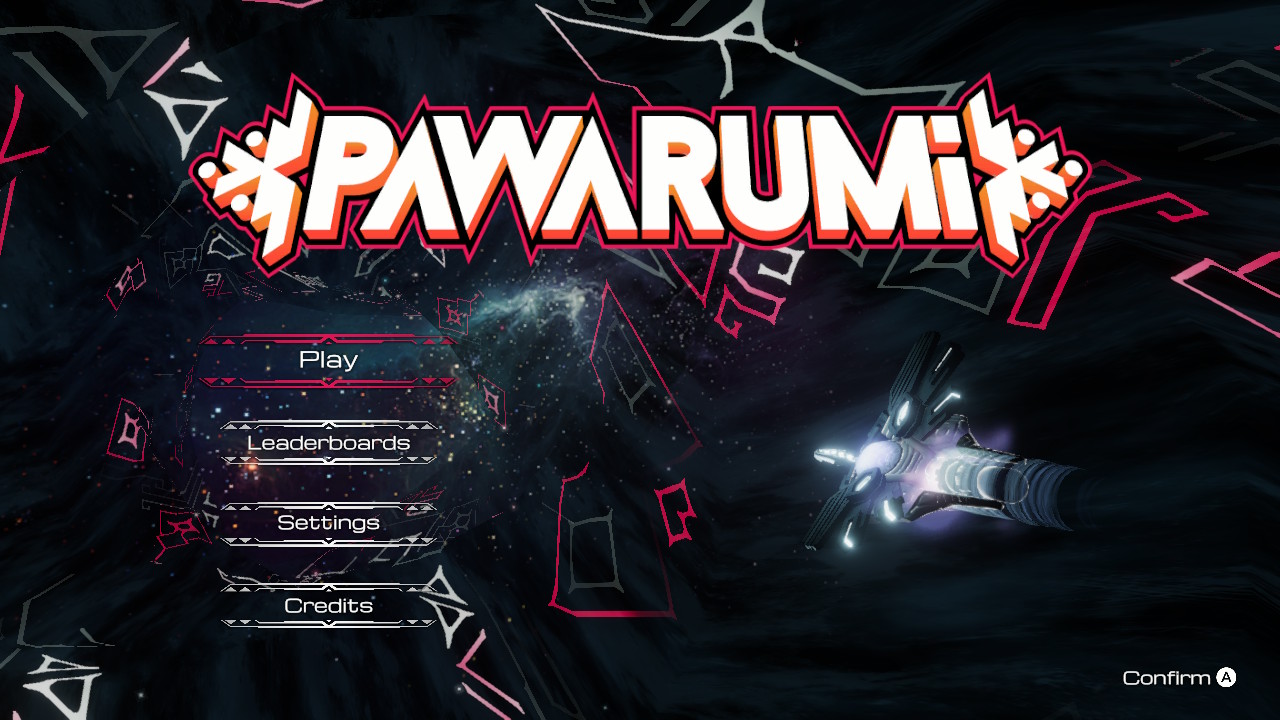[Review] Pawarumi – Nintendo Switch
Pawarumi
Nintendo Switch
Developed By: Manufacture 43
Published By: Manufacture 43
Category: Action, Arcade
Release Date: 07.24.19
Is it time for me to fall in love with a shmup that will never love me back again? It is? Great! Today’s heartbreaker is Pawarumi for the Nintendo Switch, from French developer Manufacture 43. It takes a few liberties with the traditional shoot-em-up format, but that’s no problem for me. I suck at the regular format, so anything that might give me something of an edge is welcome. Well, this hasn’t been much of an intro, but nobody reads reviews for great intros, do they? They read reviews for what’s coming up in the next paragraph.
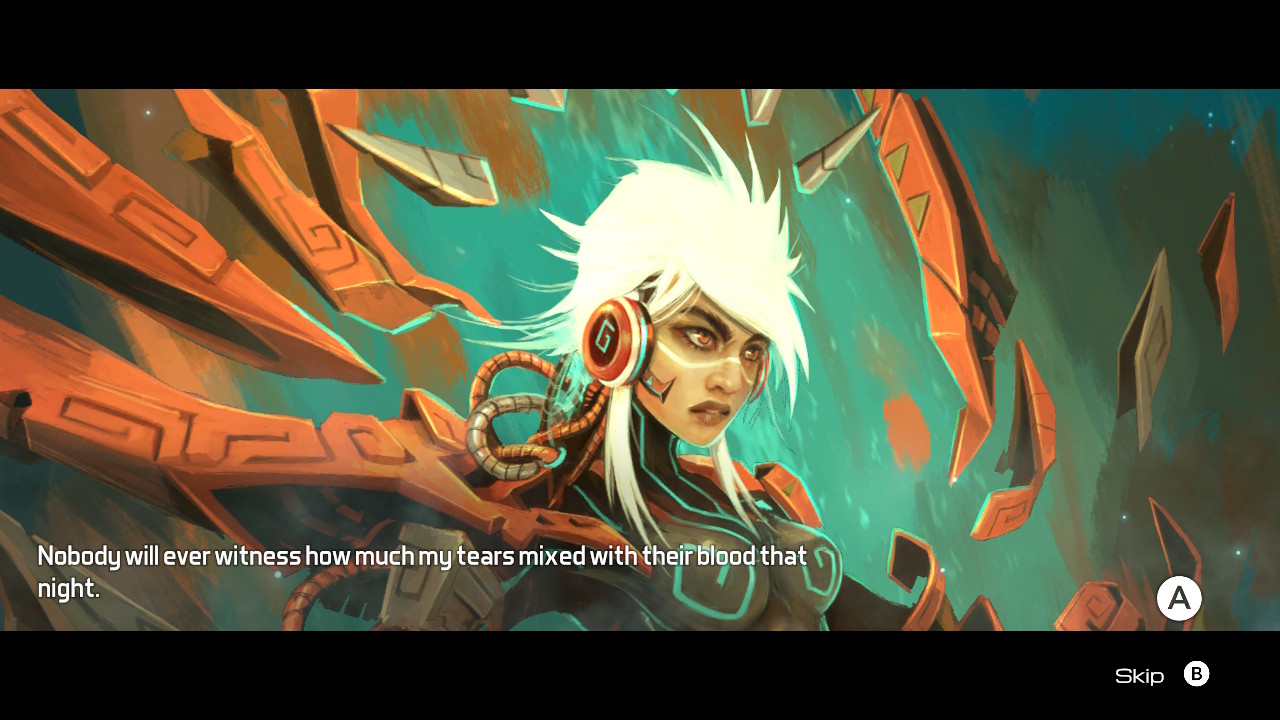
The Resources of Vast Empires Are Never a Match For a Lone Ship
In Pawarumi, players take control of Axo, a former pilot for the empire who has rebelled and has instead decided it’s time for this particular empire to fall. Using her ship, Chukaru, Axo has taken on the task of defeating the Empire’s dreaded Council once and for all. Luckily, Chukaru is the most powerful ship in the universe and Axo is the best pilot, so this should be easy, right? You’ll guide Axo through five levels (or four if you’re playing on easy) of flying bullets, swarming fighters, and massive bosses. The story is pretty light, honestly, and doesn’t really do much to draw the player into the game’s visually arresting universe. That’s not new for shmups, but it does make the story the only component missing from making Pawarumi the total package. Plus, it’s honestly kind of hard to tell who’s supposed to be talking during cutscenes, which makes things more confusing than they need to be.
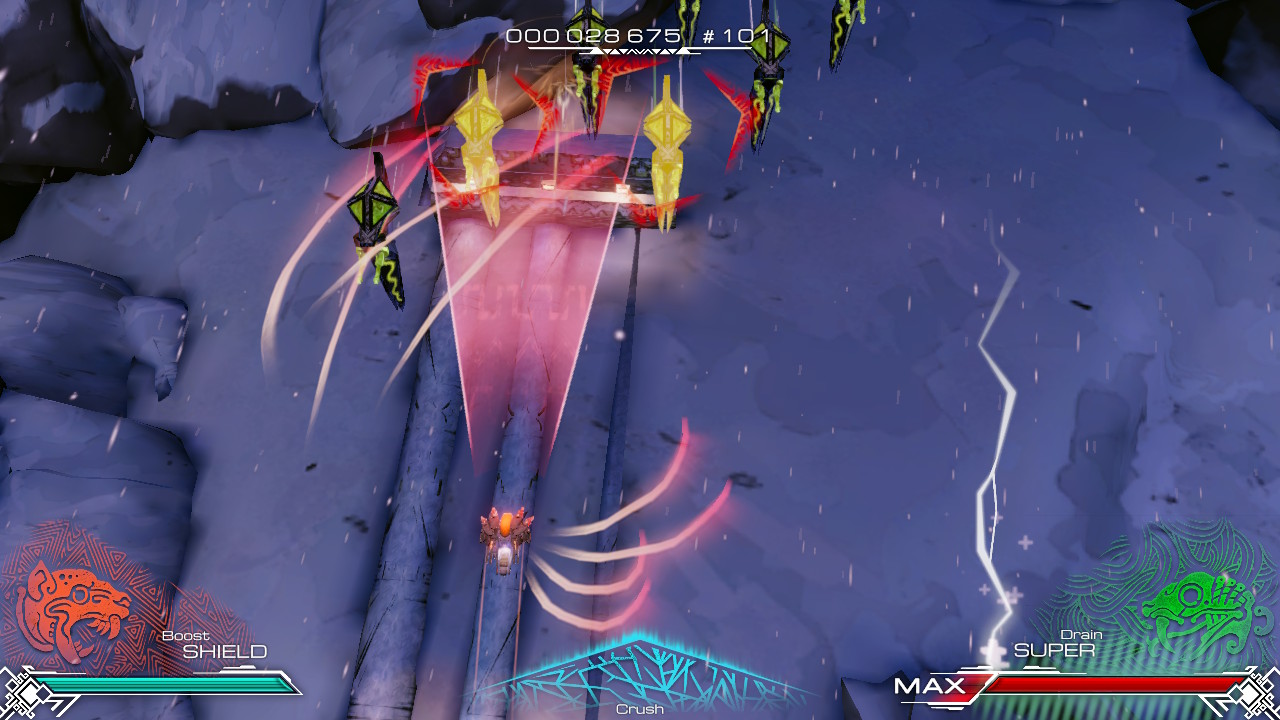
Rock, Paper, Scissors, But With Lasers
Like I said in my lackluster opening paragraph, Pawarumi has a pretty standard shoot-em-up core for its gameplay loop. You move your ship around the game screen with the left stick or D-pad, and fire your weapons with the ABXY buttons, but that’s also where things get interesting. The Trinity mechanic makes for something of a high-stakes game of rock, paper, scissors. You’ve got three different weapons, the red jaguar, blue falcon, and green serpent. Every enemy in the game has a color that matches one of your weapons, and different weapons have different effects on those colors.
If you shoot an enemy with a weapon of the same color, you regenerate health. Each color has a color that it is strong against, which boosts the damage done by your weapon. Finally, each color also has a color it is weak against, however, if you strike an enemy with that color you will fill your special attack bar. The bar can be filled up to three times, and each additional bar filled makes your special attack that much more powerful. In concept, it’s one of the coolest ideas I’ve seen in a shmup in quite some time. It’s similar to the color-coded weapons found in Iro Hero, but with a deeper strategic element. For one, Iro Hero only had two colors, but the different effects of the colors in Pawarumi just makes for a more complex, satisfying experience.
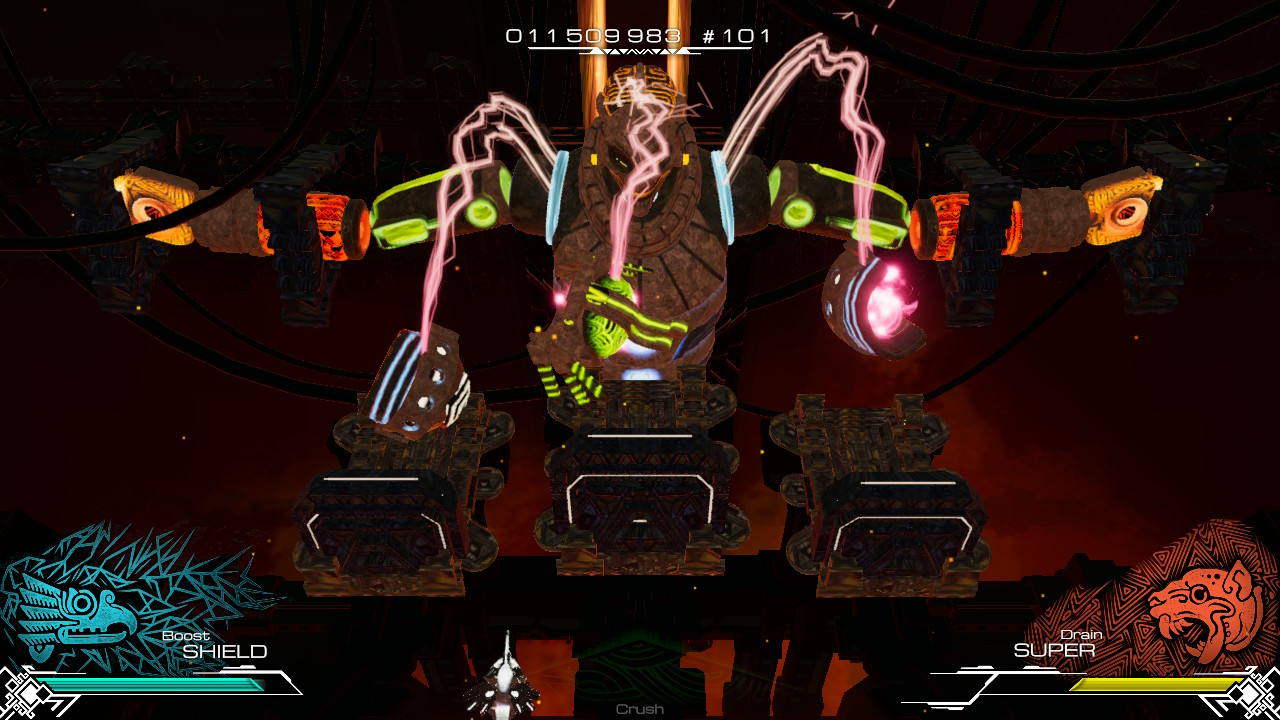
Far-Future Pre-Columbian Architecture
In addition to the innovative Trinity system, Pawarumi also features some pretty original design elements. It has some pretty traditional science fiction visual tropes, but it marries them to a Pre-Columbian South American aesthetic that just doesn’t get used much in the sci-fi genre. It makes for a visually fascinating game setting, which makes the lack of a deeper narrative all the more disappointing. This is a universe I would love to explore further, even though I know that’s not really something you do a lot of in shmups. The menu music has an ancient, primal feel, with a lot of deep, thundering drum beats mixed with electronic sounds and the occasional wind instrument. I wish it would have carried over into the actual levels, which have a slightly more generic hard rock score. Overall, though, it’s a rather unique soundtrack, I must admit, and it was quite exhilarating to experience.
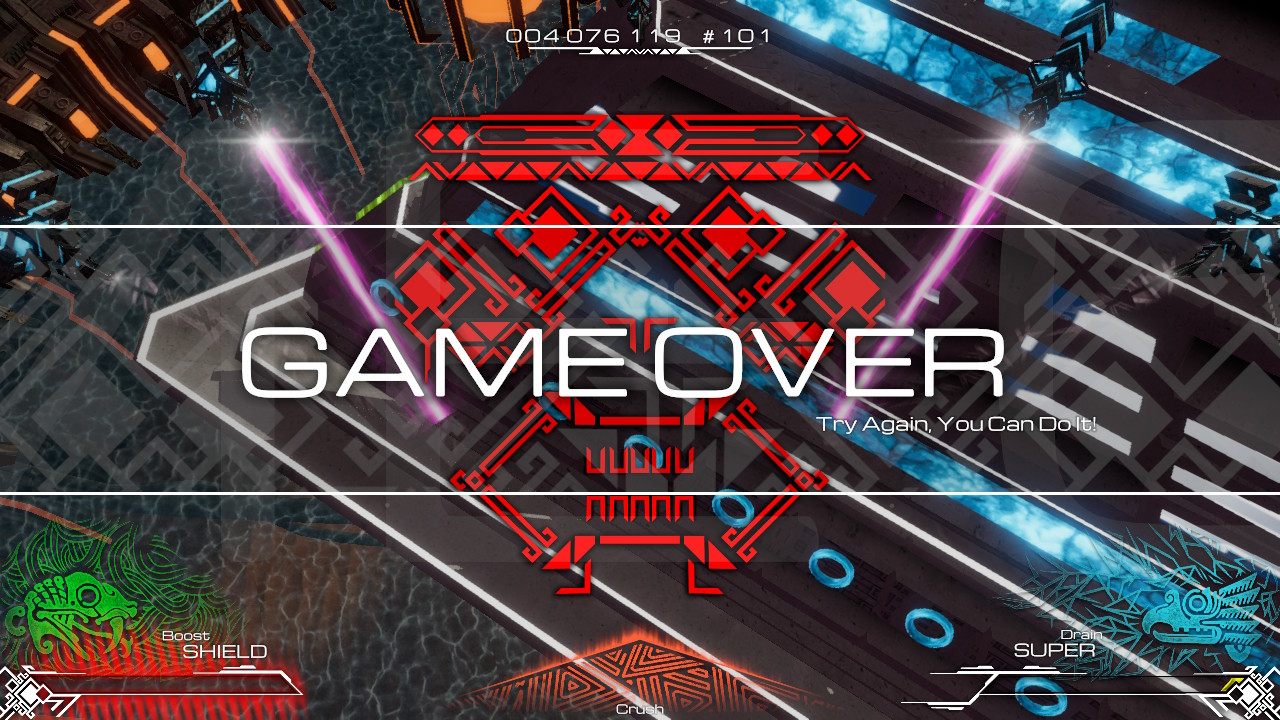
Playability
Pawarumi does not make use of either the Switch’s touch or motion controls, so you can play it docked or undocked without it making much of a difference in terms of the gameplay experience. Furthermore, I didn’t notice any great difference in the graphical quality of the game when playing undocked. I mean, sure, things were a little smaller and more cramped-looking on the Switch’s screen, but honestly it wasn’t a huge difference. I don’t really have a strong recommendation for which mode you should use to play this one; it’s all down to personal preference.
TL;DR: Fantastic-looking, innovative shoot-em-up that lacks a deep story to match its exceptional setting.





Buy Pawarumi
$14.99
Follow Manufacture 43


